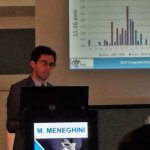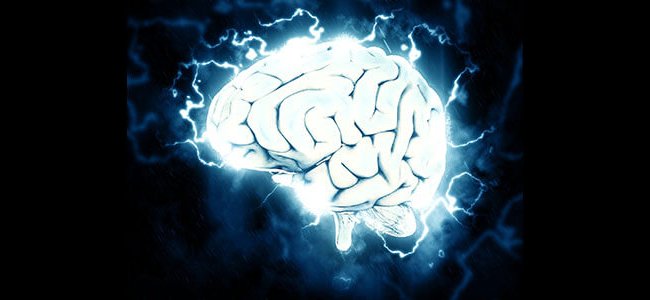Alzheimer’s: cases to double every 20 years

The editorial staff of Emianopsia has the pleasure of hosting Dr Graziana Romano: graduated in Psychology with a master’s degree in cognitive neuroscience. Dr. Romano will give us an overview of what is Alzheimer’s disease.
This pathology, which generally manifests itself during the first phase in a subtle way: subjects begin to have forgetfulness that, with time, they face a progressive worsening. As the disease progresses, one reaches the point of no longer being able to recognize their own family members. Patients living an advanced state of the disease cannot perform basic daily activities.
The cognitive decay
Cognitive decay is one of the major concerns related to the elderly population and dementia, particularly AD (Alzheimer’s Disease) is one of the major causes of age-related cognitive decay.
According to the World Alzheimer’s Report (2015), a total of 46.8 million people suffer from a form of dementia of which about 50-60% suffer from AD (therefore, we can estimate about 24/28 million cases). This figure is set to almost double every 20 years, reaching 74.7 million people in 2030, 131.5 million in 2050 and an average survival after diagnosis of 4-8 years.
Here is a short video posted by Santagostino that gives us an overview of Alzheimer’s.
Ecco qui un breve video pubblicato da Santagostino che ci dà una panoramica sull’Alzheimer.
Mild Cognitive Impairment: what does it entail?
Mild cognitive decay is a clinical condition characterized by moderate impairment of one or more cognitive domains (such as, for example, memory, attention, language). This status is often referred to as MCI. MCI subjects usually find it difficult to complete complex tasks that they had always performed; they may need longer times or show less efficiency or make more mistakes than in the past, but nevertheless they demonstrate autonomy and independence in said tasks.
What are the various types of MCI?
Based on the impaired cognitive function identified at the onset of cognitive decay, the latter can be classified into:
- Amnesiac MCI (aMCI): the subject has a deficit at a single cognitive domain, episodic or language declarative memory.
- MCI multidomain (mdMCI): the subject has deficits in more than one cognitive domain, as memory, and language.
The different types of MCI appear to have a different aetiology and be precursors of different types of dementia, the amci variant seems to evolve more frequently towards this disease (Hampstead et al., 2011). Amci patients generally show reduced cortical activity in the frontal and parietal lobes, compared to healthy elderly people and ( as in the case of AD subjects ) show greater variation in the anterior portions of the hippocampus.
What are the causes of Alzheimer’s disease?
We are therefore talking about a progressive and irreversible neurodegenerative disease that affects the cells of the central nervous system. The cause at its origin would seem to be linked to the alteration of the metabolism of a protein, the precursor protein of amyloid beta (called APP), which, for unknown reasons, cannot be metabolized properly anymore.
This leads to the formation of a neurotoxic substance – amyloid beta – which slowly accumulates in the brain leading to progressive neuronal death. In the last stages of the disease, the progressive cellular poverty macroscopically results in atrophy of the cerebral cortex, that is, in a thinning of the brain tissue also visible with CT and Magnetic Resonance Imaging.
The symptoms
The most evident symptoms that can be observed in the initial phase of the disease may be:
- amnesiac memory loss such as so-called “memory gaps”.
- non-specific disturbances, such as changes in the circadian rhythm.
- personality changes: people may become less reactive emotionally, depressed, unusually fearful and/or anxious, or they may accentuate some personality traits.
Within 6-12 months the course of the disease sees a symptomatologic progression with the appearance of deficits involving other cognitive areas:
- spatial/topographical disorientation: in the early stages, the patient may have difficulties in learning new paths, or it is possible that the patient completely forgets the paths in their house.
- speech deficits: initially they present as mild speech disorders that consist in the difficulty of finding words with less frequency of use, the names of people, objects, or drugs. At the most advanced stages of the disease, overt aphasia is likely to occur.
- visuo-spatial deficit: in a small percentage (3% of cases) they can represent the initial symptom. Many patients present with fairly early apraxia of clothing (inability to dress properly) and are equally difficult (inability to think and perform a specific movement);
- attentive deficits: the patient has difficulty in performing several tasks at the same time, may not be able to inhibit erroneous behaviours, has difficulty focusing attention on a task until the end.
- deficit of abstract reasoning: the patient is neither able to solve normal daily activities nor to cope with new situations.
Later psychiatric manifestations appear such as apathy, irritability, behavioural disorders, disinhibition, and the phenomenon of the diachronic transposition of the autobiographical past into the present (e.g.: deceased people are believed to be alive and identified with other family members).
How to reach the diagnosis to an Alzheimer’s patient
Currently the diagnosis of AD involves the analysis of the patient’s clinical history and the use of neuropsychological tests such as the Mini-Mental State Examination (MMSE). In association with the evaluations of mental health status. It is fundamental to perform neurological examinations such as magnetic resonance imaging and SPECT (single photon emission computed tomography).
It has been observed that SPECT seems to be very useful in differentiating this disease from other possible causes; being an examination performed to measure blood flow in the brain, it was found that this flow is reduced in AD patients due to decreased nerve cell activity.
We thank Dr Romano for this precious intervention and invite you to deepen the cognitive decay in our article: Cognitive deterioration: the rehabilitation path.

You are free to reproduce this article but you must cite: emianopsia.com, title and link.
You may not use the material for commercial purposes or modify the article to create derivative works.
Read the full Creative Commons license terms at this page.










